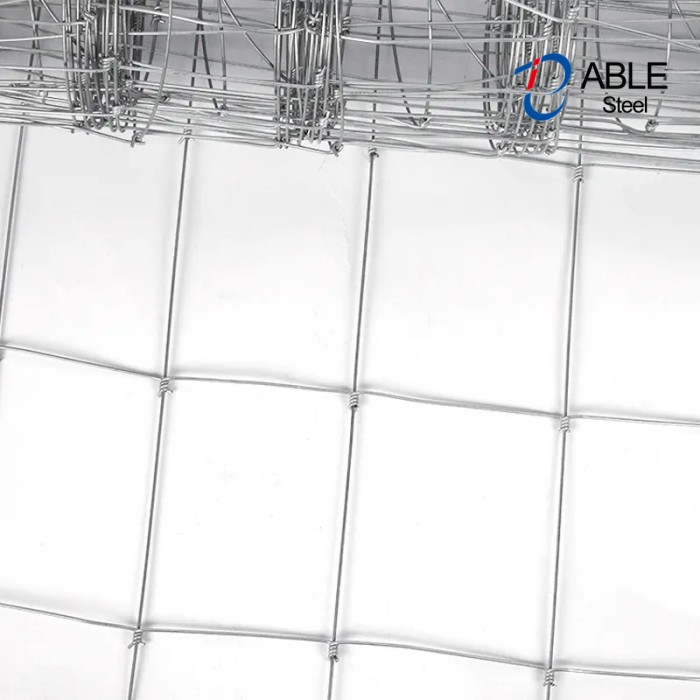Hog wire, also known as hog panel or livestock panel, is a type of fencing made of heavy gauge wire. It is commonly used in agricultural settings to contain livestock, such as pigs, cattle, and sheep. Hog wire is typically made of galvanized steel or stainless steel, which makes it durable and resistant to rust. It consists of rectangular or square-shaped openings that allow for visibility and airflow while still providing a strong barrier. Hog wire fencing is also used in residential and commercial applications for various purposes, including garden fencing, animal enclosures, and decorative fencing.
The production process of hog wire typically involves the following steps:
1. Wire Drawing: The first step in the production process is wire drawing, where steel wire rods are pulled through a series of dies to reduce their diameter and increase their length. This process helps in creating the desired thickness and strength of the hog wire. 2. Galvanization: After wire drawing, the steel wire is usually galvanized to enhance its corrosion resistance. Galvanization involves coating the wire with a layer of zinc by either hot-dip galvanizing or electroplating. This process helps in increasing the longevity of the hog wire, especially when it is exposed to outdoor elements. 3. Welding: The Galvanized Steel Wire is then welded together to form the hog WIRE MESH. Welding involves joining the intersecting wires by applying heat and pressure. This process ensures that the wires are securely bonded, creating a strong and durable mesh. 4. Cutting and Shaping: Once the hog wire mesh is welded, it is cut into the desired length and shape. The wire mesh can be cut into panels, rolls, or custom sizes based on the specific requirements of the customer. 5. Quality Control: Throughout the production process, quality control measures are implemented to ensure that the hog wire meets the required standards. This may involve inspecting the wire for any defects, checking the welds for strength and consistency, and conducting tests to verify the galvanized coating thickness and adhesion. 6. Packaging and Distribution: After passing the quality control checks, the hog wire is packaged and prepared for distribution. It may be bundled, wrapped in protective materials, or placed on pallets depending on the customer's needs. The packaged hog wire is then shipped to retailers, construction sites, or other end-users. Overall, the production process of hog wire involves wire drawing, galvanization, welding, cutting and shaping, quality control, and packaging. This process ensures that the hog wire is of high quality, durable, and suitable for various applications such as fencing, animal containment, and construction.



